- The Artura is an all-new plug-in hybrid supercar for 2023.
- Its turbocharged V6 and plug-in hybrid system combine to make 671 hp.
- It provides an EPA-estimated 11-mile all-electric driving range.
2023 McLaren Artura First Drive Review: McLaren's New Hybrid Supercar
McLaren's second plug-in hybrid marks a new era for the company
Nearly a decade ago, McLaren released its first plug-in hybrid, the P1 hypercar. Now the British automaker has developed an all-new plug-in model, though the 2023 McLaren Artura is an entirely different beast. The Artura is less powerful than its predecessor, but it's also significantly less expensive and won't be limited to just 375 units as the P1 was. Even so, the Artura is absolutely a McLaren through and through.
The lineage is obvious from the moment you walk up to it, as the design — while all-new — features cues found on other models like the GT and 720S. That includes details like deeply inset headlights, high-mounted exhaust tips and, of course, the dihedral doors that open up and out. The Artura is striking, especially in some of McLaren's more vibrant paint colors, though we wouldn't call it beautiful. But looks are only part of the equation when it comes to cars like this: You need to have the performance to back it up.
What's under the Artura's hood?
The Artura uses an all-new engine for McLaren: a twin-turbocharged 3.0-liter V6, the first six-cylinder engine for a McLaren road car. The cylinders are mounted at a wide 120-degree angle as compared to the more narrow 90-degree angle as used on the automaker's V8. The V6's wider angle means it's physically shorter than the V8, so it can sit lower in the car and bring down the center of gravity to improve the Artura's weight balance. The engine uses the so-called "hot V" setup that places the turbochargers and exhaust manifold above the engine between the cylinder banks rather than the bottom. It's a common setup for performance cars these days as the shorter distance between the turbo and the engine allows for the former to build boost more quickly. It helps reduce turbo lag and improve throttle response.
As notable as the new V6 engine is, it's the electric motor mounted in the eight-speed transmission's bell housing that's the real news here. It's only a few inches thick and light enough to pick up with a single hand, yet it helps boost the Artura's total output to 671 horsepower and 531 lb-ft of torque, up from 577 horsepower and 431 lb-ft of torque from the gasoline engine alone. The electric motor is powered by a 7.4-kWh battery pack that's mounted behind and below the driver. The center section of the car is a single carbon-fiber tub that's attached to aluminum front and rear frames. The new design was developed with a hybrid powertrain in mind, so we expect this won't be the last plug-in McLaren.
The transmission is notable, too, as it's McLaren's first eight-speed transmission. The transmission itself is no bigger than McLaren's seven-speed, made possible by removing the reverse gear entirely. So how do you back up? The electric motor will simply run in reverse. Clever stuff to help keep weight down. All in, the Artura weighs a little over 3,300 pounds.
How does the Artura drive?
When the car turns on, it defaults to all-electric mode (given there's charge in the battery), but a drive mode rocker switch mounted within a finger's reach of the steering wheel can fire that engine up with just a simple click. There are four modes: E-mode, Comfort, Sport and Track. Comfort mode acts like a traditional hybrid, using electricity at low speeds or while at stoplights and firing the engine up when you demand it. Rather than using the electric motor to improve efficiency, Sport and Track modes use it to improve performance, expending more energy at lower speeds to improve torque and throttle response.
The suspension has three basic settings tied to each drive mode, but it's adaptive and constantly adjusting on the fly. McLaren is using a new rear suspension design that it says improves stability and reduces understeer. The stability and traction control are adjustable, too. Traction control uses what McLaren is calling Variable Drift Control. Rather than on and off, traction control can be backed off incrementally to allow for some rear-out antics if you're so inclined. Aiding traction is the Artura's electronic locking differential. Using an e-diff saves weight versus a mechanical differential and allows for precise control over how much torque is being sent to each rear wheel.
Given everything McLaren has thrown at it, it's no surprise that the Artura is an obscenely fast machine that can quickly send you well past the speed limit with a dip of your right foot. Power response is immediate and fierce, provided you don't have it in all-electric mode. The battery allows for an EPA-estimated all-electric range of 11 miles, though power is limited to what the electric motor can provide. It's enough for city driving, and while you can drive up to 81 mph with electricity alone, it will take a bit to get up to that speed as power falls off dramatically past 30 mph.
There's more than enough power on tap for any public road. We had a chance to drive the car both on the street and on a short 1.4-mile road course, though that course included a straight long enough to find that fourth gear will take you to at least 131 mph. The Artura's top speed is an electronically limited 205 mph.
The engine revs quickly, and redline is a heady 8,200 rpm. If you shift by ear rather than eyeballing the tach or leaving it in automatic, there's an inclination to short shift. As with other screamers like the Ford Shelby GT350's V8, the Porsche 911 GT3's flat-six and the Honda S2000's inline-four, it takes a minute to get used to having a higher rev ceiling. The difference here is that those three were all naturally aspirated engines, whereas the Artura of course is a turbocharged hybrid. High-revving engines can feel a bit weak at low revs, but that's where the electric motor and turbochargers benefit the McLaren. It helps offer smooth power delivery rather than the swell that can come with powerful turbocharged cars.
Because there's an extra gear in the transmission, the gear ratios have been tightened up in an effort to further improve throttle response. The dual-clutch transmission is very responsive, and the one-piece wheel-mounted shift paddle is satisfying to use. But at low speeds, especially when coming to a stop, downshifts can feel clunky and a bit unrefined.
Speed is far from everything. Handling is paramount in sports cars, and the Artura mostly delivers. The car feels planted and stable on the street, tackling a winding back road with aplomb. The steering is still hydraulically assisted and offers excellent feedback. It's quick and weighted well, with enough heft to give you a sense of what the front tires are doing without feeling overly heavy. That's good, as there's only one setting for the steering. McLaren says it wants the steering to feel consistent no matter the drive mode. We think that's a good thing because electronically assisted power steering all too often feels compromised and numb.
Part of the beauty of moving the engine is freeing up weight over the front axle and pushing the cabin forward. It makes the Artura quick to turn in, though on the road course we did notice the nose pushing a bit on tighter corners. If you back off the traction control a few notches, you can use the throttle and e-diff to mitigate understeer and rotate the rear.
In addition to improved handling in corners, the Artura's e-diff helps with high-speed stability, too, say like cruising on the highway or barreling down the straight on a track. The Artura has a relatively short wheelbase to help make it feel nimble in corners. Longer wheelbases provide more stability at speed, but the way the differential can adjust torque on the fly can be used to help provide the same stability with a shorter wheelbase.
The Artura wears big carbon-ceramic rotors with six-piston front and four-piston rear calipers. McLarens all tend to have firm brake pedals, and the Artura is no different. As with the steering, McLaren wanted the brake feel to be consistent all of the time, so, somewhat unusually for a hybrid, the Artura does not use a brake-by-wire system, and as such, there's no regenerative braking at all. The upshot is that the brakes always feel the same no matter what drive mode you're in. The pedal is firm, but it feels strong and is easy to modulate. We didn't notice any fade during our day behind the wheel.
McLaren worked with Pirelli on a new tire for the Artura. It comes standard with Pirelli P Zero summer tires, while higher-performance P Zero Corsa tires are available. All of the test cars were fitted with the latter. They're staggered, sized 235/35ZR19 front and 295/35ZR20 rear. But these aren't the typical P Zeros you can order off of Tire Rack. The compound was developed for this car and, interestingly, features a Bluetooth chip embedded inside the tire that communicates with the car. The car can automatically recognize the compound as well as read tire pressures and temperatures.
How comfortable is the Artura?
The Artura's ride quality is pretty solid for a sports car. You feel bumps and imperfections, but nothing is overly harsh or back breaking. Certain sections of pavement on our drive were rough and worn, but the Artura's adaptive suspension tuned out much of it. Only Track mode felt overly stiff for the street. We spent a full day behind the wheel on everything from city streets to big stretches of interstate, and we still weren't itching to get out.
The Artura's exhaust note is loud but not overbearing from inside the cabin. It's one of the better-sounding V6s around, though it doesn't sound quite as burly as McLaren's V8. There's a bit more wind and road noise on the highway than we'd prefer but, as with the exhaust, it's never overbearing or obnoxious.
How's the Artura's interior?
That new carbon-fiber tub does more than just provide a place to mount the battery. The design allows for a bit more interior space than in some other McLaren models like the 570S. And good news for those that have been in other McLaren models: The extra space allowed for redesigned seat controls, so it no longer feels like a fishing expedition just to adjust your back angle. The standard sport seat is comfortable and supportive enough to keep you planted in corners. Fixed-back sport seats are available.
The rest of the cabin is handsome and well appointed. There's decent room in all directions. It's very driver-focused, and everything is easy to see and reach. McLaren wants you to be able to control most features without taking your hands off the wheel, but the automaker doesn't slather it with buttons like you'll find on a Lamborghini or Ferrari. It's a much more clean and elegant design than what the Italians offer.
How's the Artura's tech?
Driving assistance tech is generally absent on sports cars, but the Artura bucks the trend by being the first McLaren to offer adaptive cruise control, and in our experience it works very well. It's smooth to adjust speed and holds tight enough gaps that you won't constantly have drivers cutting you off in traffic. Along with adaptive cruise control, the Artura is available with lane departure warning and parking sensors.
McLaren offers both Apple CarPlay and Android Auto in the Artura, and over-the-air updates should bring wireless connectivity in the future. The screen is small but responsive, and a knob on the side that resembles a watch crown can be used to adjust volume. That's good since this is also the first McLaren to offer a subwoofer.
Edmunds says
A plug-in hybrid supercar seems to offer the best of both worlds. Performance when you need it, efficiency when you don't. It may not be as wild or as powerful as some of McLaren's other cars, but the Artura is still mighty quick and plenty capable. If anyone calls hybrids boring, just point them in McLaren's direction.
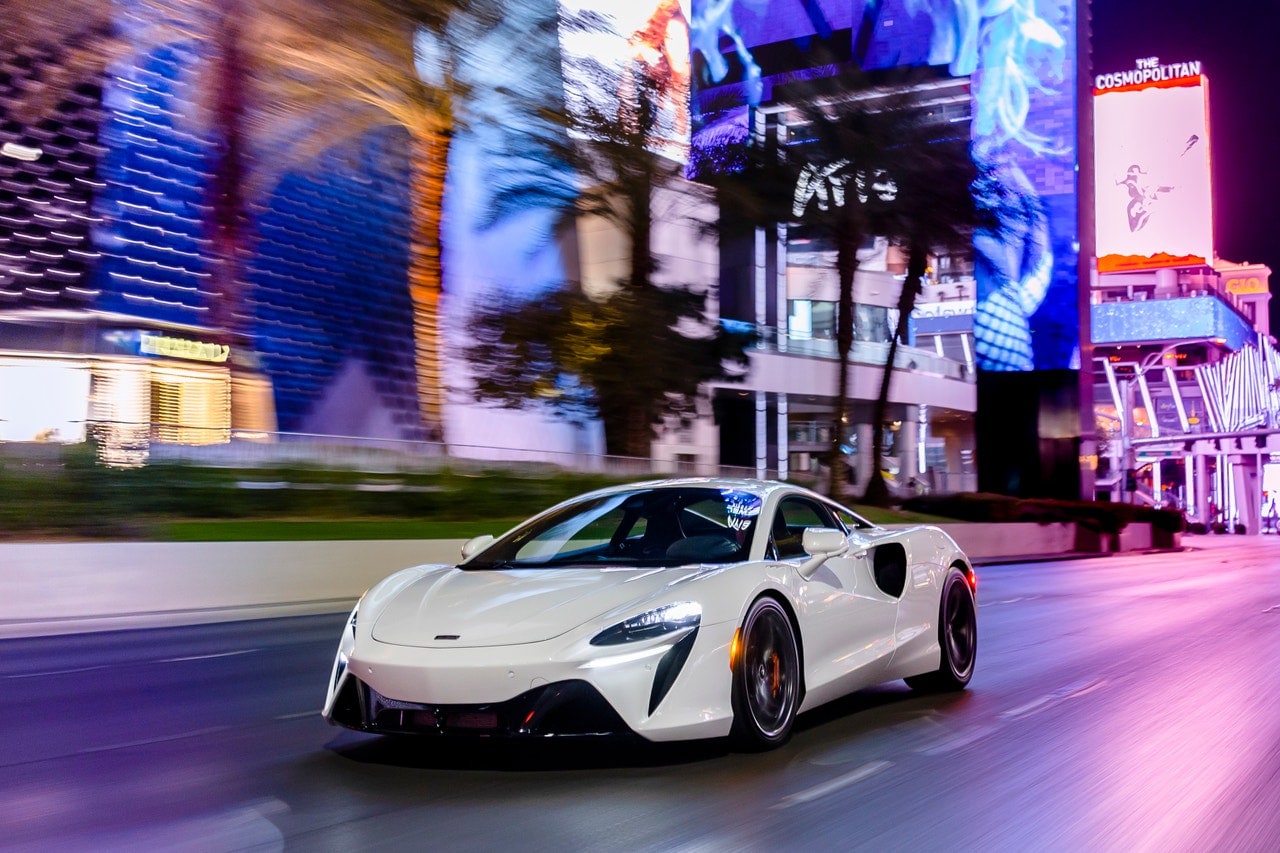




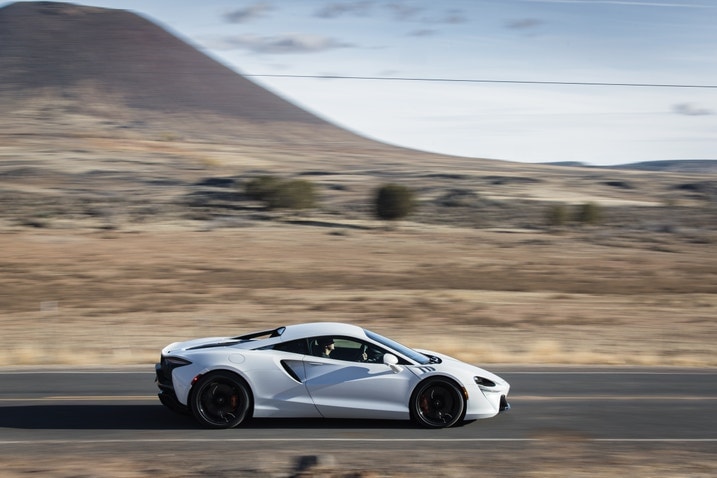
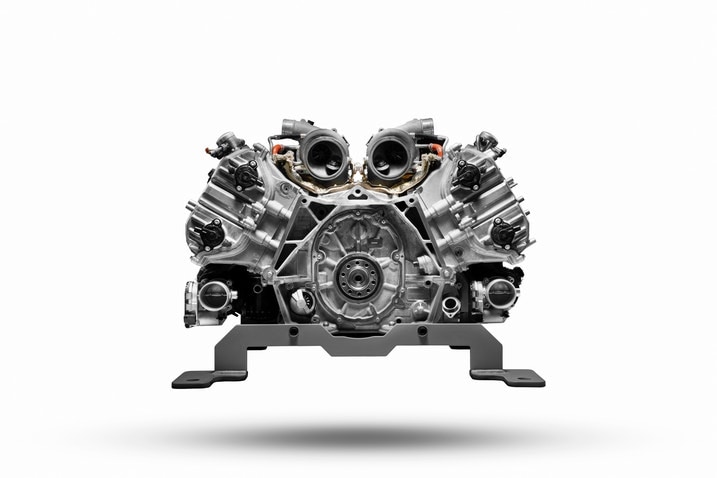

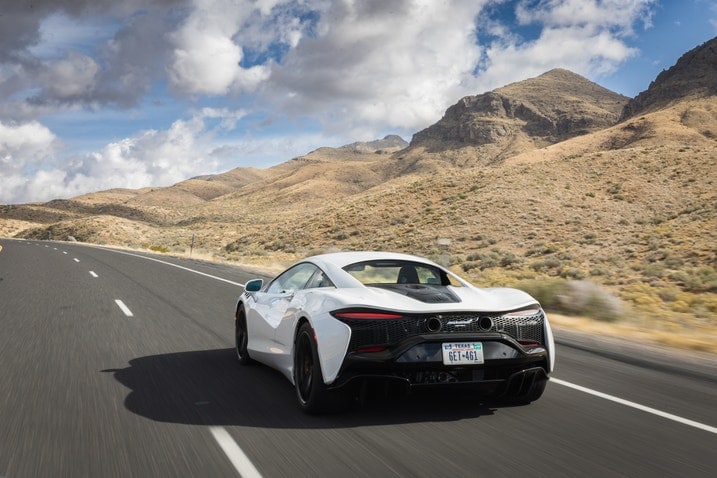
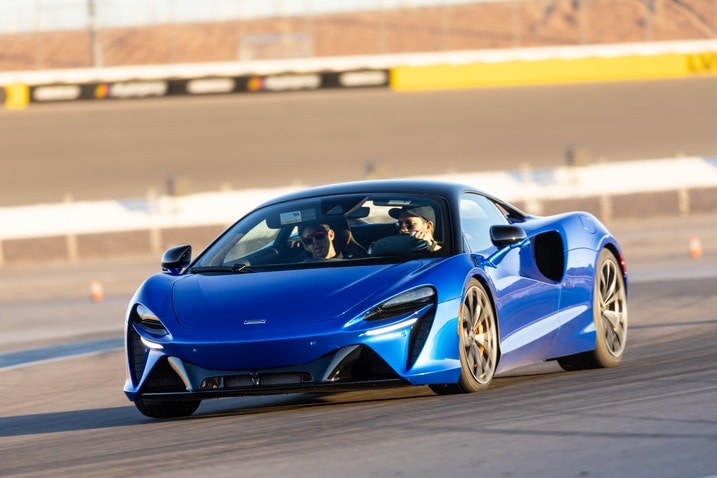
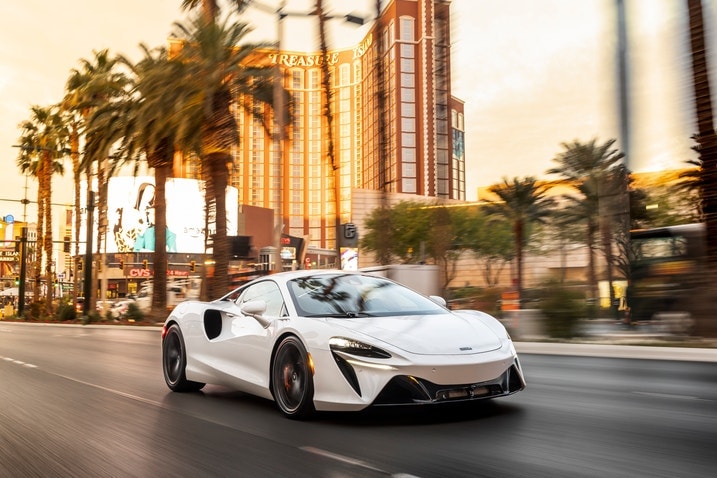

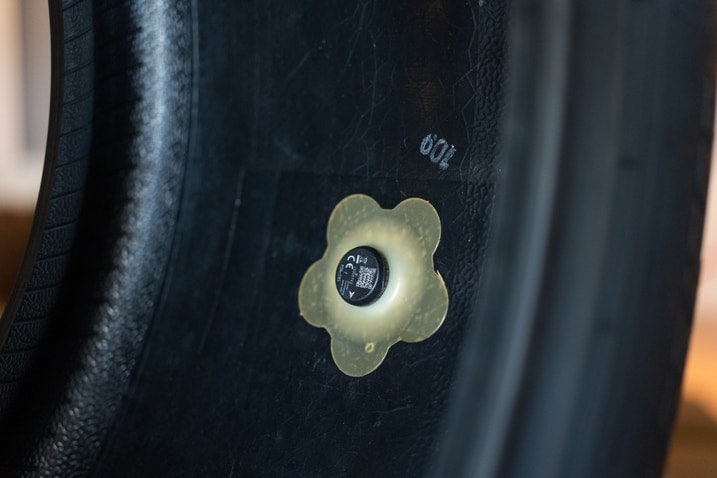
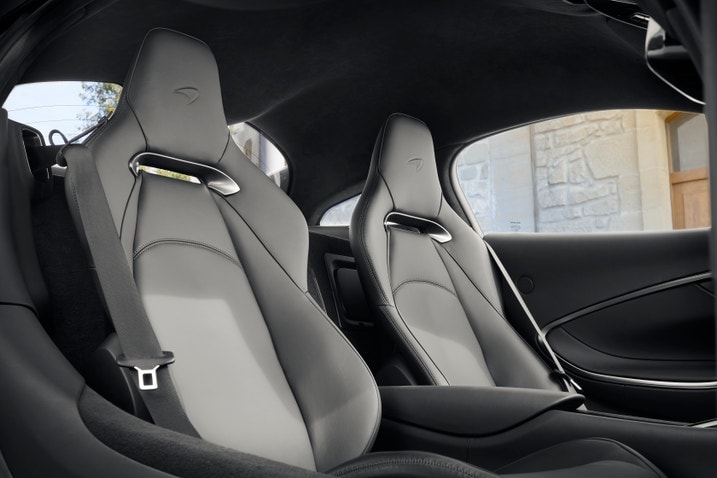

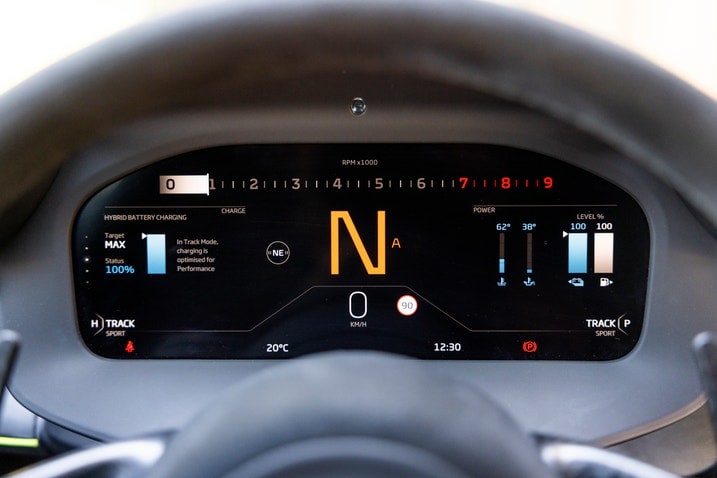
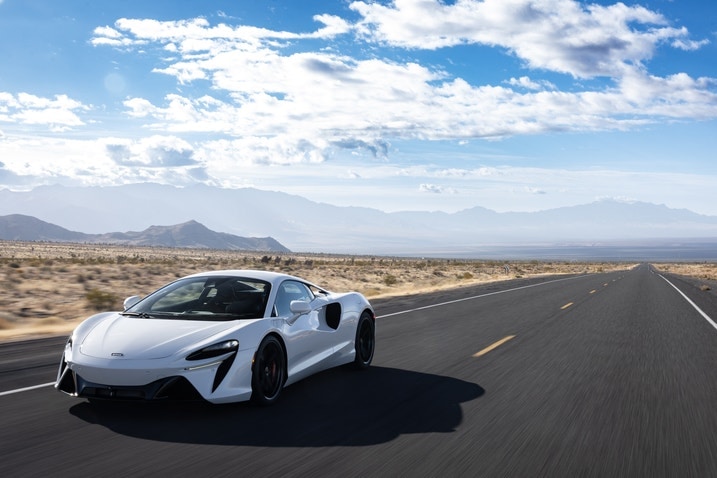
 by
by